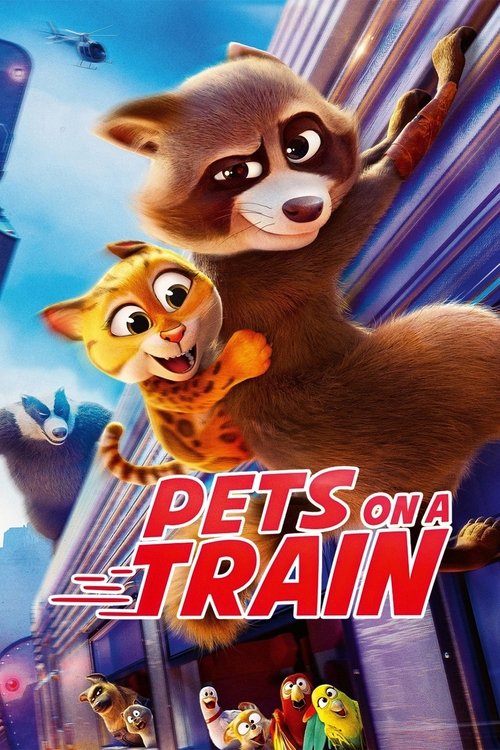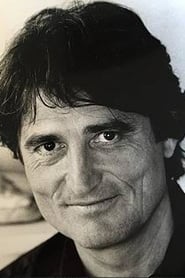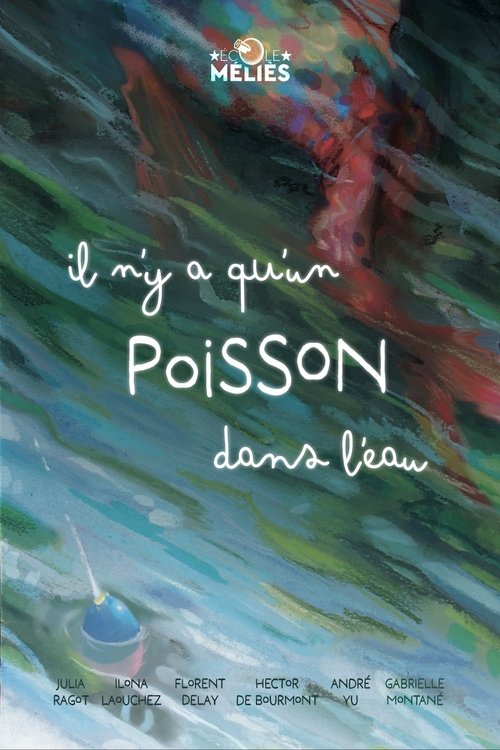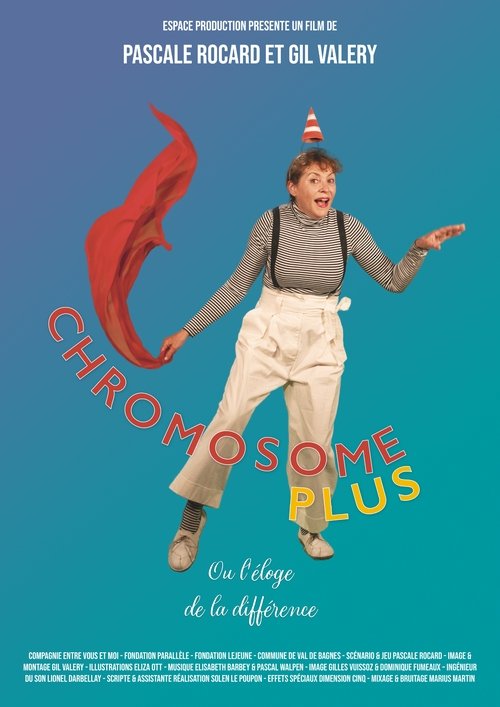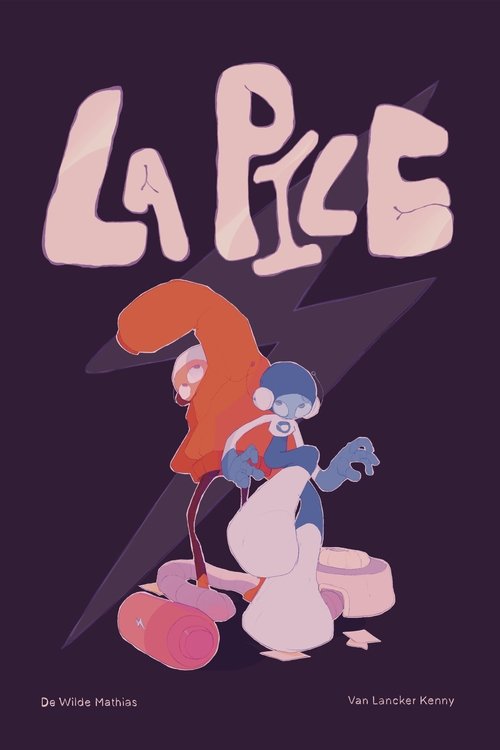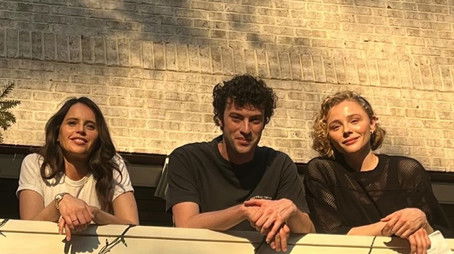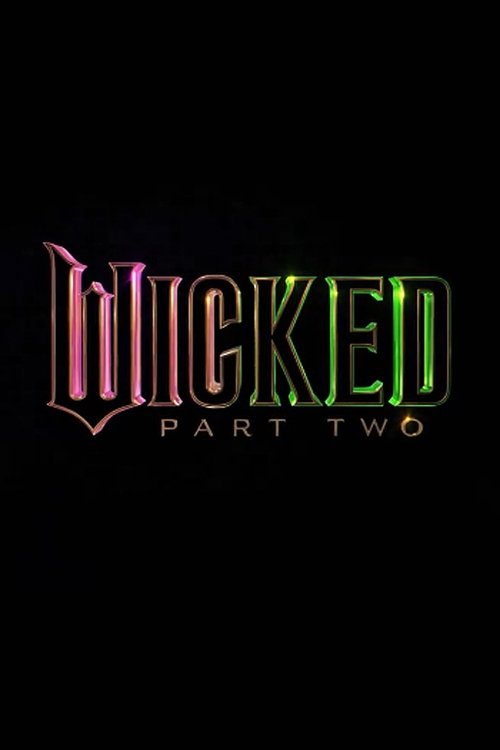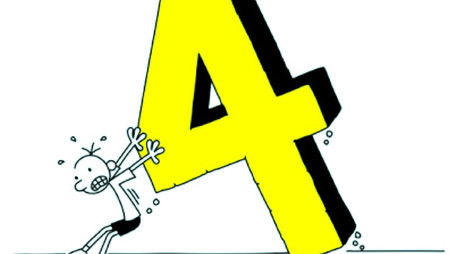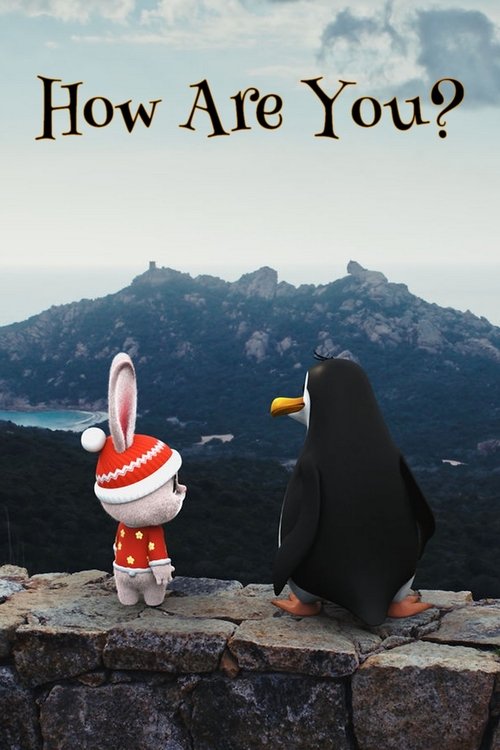
Ask Your Own Question
What is the plot?
Kermit the Frog arrives at a Midtown office flush with excitement, carrying the manuscript for his musical, Manhattan Melodies. He meets with Bernard Crawford in his suite, but it is Bernard's son Ronnie who has engineered the meeting by forging a letter. Ronnie admits that this is his first attempt at producing and that his father has promised to supply all the stagecraft, lighting, and scenery necessary for a debut. Bernard begrudgingly agrees to let Ronnie take one shot at producing a show, and when Ronnie presents Kermit and explains that his friends will perform in the piece, Bernard consents to back the project despite his reservations. Kermit leaves the office elated and uses a payphone to call Miss Piggy and Jenny at Jenny's father Pete's luncheonette to share the news. Kermit tells Jenny that she will design the costumes and instructs Miss Piggy that the cast must be gathered immediately. He promises to be at the luncheonette within ten minutes.
Kermit does not reach the luncheonette. He steps into a crosswalk while a pedestrian signal warns "Don't Walk," and a taxicab strikes him. Emergency responders take him to a Manhattan hospital. At the luncheonette, Miss Piggy grows anxious when Kermit fails to arrive; Jenny and Pete attempt to calm her, but worry spreads. Ronnie arrives to explain that his father will provide sets and that the show must open in two weeks; he urges the group to summon every Muppet back to New York. Pete sends telegrams, and the various Muppets, together with the assortment of animals they befriended while working distant jobs, receive notice and begin returning to the city.
In the hospital, doctors examine Kermit and diagnose him with amnesia. He carries no identification when found, and staff cannot determine his identity. A physician advises that, given his condition, it would be better for him to accept a new life rather than expect memory recovery. Hospital personnel clothe him in civilian garments and discharge him. Kermit wanders Midtown and enters an advertising agency on Madison Avenue run by three frogs named Gil, Bill, and Jill. The firm is struggling to come up with a slogan for a soap campaign; an executive asks for the opinion of "an ordinary frog-on-the-street." Kermit, having lost his name, looks at a framed print that reads "Phil," borrows it as "Phillip Phil," and improvises a crisp slogan that satisfies the team. Impressed, Gil, Bill, and Jill hire him on the spot. Kermit slips into his new role at the ad agency and adapts to the routines of copywriting and client meetings under the assumed name.
Back at Pete's luncheonette, the reunited troupe organizes search parties and rehearses for the imminent Broadway opening. They spend days combing the city and nights running through choreography and lines. Each search ends without success. As opening night approaches, the group exchanges grim looks: they must proceed without their director and friend if they cannot find him. The ensemble brings props, scripts, and costumes into a small rehearsal space and divides responsibilities, but the absence of Kermit leaves a creative gap they cannot fill.
At the same time, a separate crisis unfolds outside the theater district. A long-distance passenger train carrying dozens of household pets and other animals -- many of them friends the Muppets made while working away -- becomes the focal point of a dangerous plot. Hans, a badger with a grudge and a calculated streak, rides near the engine. Fueling his scheme with personal animus, Hans tampers with the brake systems and manipulates the throttle controls on a remote service track. He severs pneumatic lines and wedges a wrench in a lever, engineering a runaway scenario. For reasons of vengeance he does not explain to the animals on board, Hans intends the train to careen into a section of track where a crash would cause maximum disruption. The engine begins to accelerate beyond safe speed; the conductor calls emergency and the train crew scrambles but finds the primary braking system unresponsive. Doors click closed, passengers panic, and cages rattle as the cars gather momentum.
A raccoon named Falcon emerges as the pets' de facto leader. Falcon is thin, fast, and accustomed to squeezing into tight spaces; he moves from car to car, cataloguing the injuries and rallying the animals around an improvised plan. He reconnoiters the roof of a mid-train carriage and observes Hans moving toward the locomotive. Falcon tells dogs to form a bracing chain to slow a swinging cargo crate and instructs smaller animals to free a jammed emergency cord. He improvises a toolkit from a supply locker, fashioning a length of wire and a hook. He determines that the only way to halt the train is to either access the engine controls or decouple the vehicles in a controlled manner before the tracks slope toward a treacherous crossing.
Falcon races along the train's exterior as it gains speed, using gaps in the roof walkway to leap between cars. He times his jumps precisely, vaults to the gangway toward the locomotive, and slips into a service panel behind the engine. Inside the cab, Hans confronts him; the badger brandishes a heavy wrench and lunges. Falcon feints and ducks, causing Hans to overreach; the wrench slips from the badger's grasp and clatters into the throttle equipment. The two collide, clawing at levers and emergency toggles. Hans aims to maintain acceleration; Falcon aims to trigger the fail-safe. Falcon uses the improvised hook to snag a cut wire that Hans had rerouted, and he yanks it, creating a short that forces the engine into a backup mode that reduces power output. The locomotive's control system shudders and begins to slow incrementally, but the momentum of the cars still pushes toward catastrophic speed.
Meanwhile, a span of track ahead features a movable drawbridge that must remain open for barge traffic. Falcon evaluates that he cannot get the engine to a stop before the bridge; instead, he decides to sever the train in a way that leaves the locomotive to coast past the draw and allows the animal-filled passenger coaches to roll into a siding where rescue teams are assembling. He darts toward the coupler, working furiously with a length of chain he found in a cargo compartment. The movement throws him off balance; Hans pursues and tries to strike him from behind. Falcon twists, hooks the chain around the coupler, and with the help of two large dogs who have lined up to lever on a release catch, he manages to unlatch the connection between engine and first carriage. The locomotive jars free and coasts ahead under diminished power; the train's rear cars grind along and, by design of the track crews who have been alerted by radio calls from the conductor, a set of derailing catch points and emergency brakes lie on the siding. The wheels of the unpowered coaches kiss the siding and scrape to a halt in a cloud of dust and bent metal, but no carriage overturns. Rescue personnel and volunteer animals surge forward to help the shaken pets climb out of cages and carriers.
Hans attempts to sprint back onto the slowing coaches and flee, but a collie named Bristles and a subway-savvy raccoon named Snipe bolt from the doorway. They tackle Hans, restrain him by wrapping him with Falcon's chain, and pin him until human rail security arrives. Rail officers take Hans into custody; he is handcuffed and led away, shouting insults and threats that no longer matter because the immediate danger has passed. Falcon receives rough, grateful embraces from animals he has saved; several dogs lean on him, and a small rabbit pushes his head under a harness in thanks. No one aboard the train dies. Several animals sustain bruises and sprains; rescue medics from a nearby town treat cuts with antiseptic and bind sprained legs.
News helicopters circle as the pets and their rescuers are escorted to temporary shelters and veterinary stations. The televised reports identify Falcon as the raccoon who climbed to the engine and halted the disaster. Ronnie and several Muppets learn of the catastrophe while they are rehearsing in the theater loft. They recognize that many of the animals recently hired to be background performers for Manhattan Melodies were aboard the train. The troupe dispatches a delegation to the veterinary camp to check on their friends; they find the animals shaken but eager to be part of the Broadway production. The Muppets help load carriers and belongings into vans and transport everyone back to the city an hour before curtain.
On opening night at the small Broadway house, the cast and crew convene in the cramped green room. Kermit finally appears at the luncheonette during the lunch hour, sitting with Gil, Bill, and Jill after a day at the ad agency. He idly taps on glasses with a metal spoon, playing the opening melody of Manhattan Melodies. Gonzo spots him and shouts his name across the diner. Muppets run over and swarm him with giddy relief, but the jubilation dies when Kermit looks at them blankly and smiles with no recognition. The cast carries him to the theater, laying him on a couch in the dressing room. They attempt a series of stimuli to recover his memory: props, photographs, catchphrases, and impromptu scenes, but nothing triggers recall. Scooter calculates that they will have to proceed without their director.
As curtains tremble and Dr. Teeth and the Electric Mayhem begin the onstage prelude, Miss Piggy refuses to abandon hope. She kneels beside Kermit, reminding him of lines, scenes, and shared moments; she quotes their private vows he had promised her if the show ever made it to Broadway. Kermit smiles and laughs at the idea that a frog and a pig could be in love. Angered by his apparent dismissal, Miss Piggy snaps into combat stance and delivers an immaculate karate chop squarely to his chest. The blow knocks Kermit backward into a chair; he gasps, then his eyes flash with recognition. The impact dislodges the final barrier in his mind; memories flood back. He remembers the office with Bernard, the payphone call, and the promise to his friends. He remembers Jenny's costume sketches, Gonzo's exaggerated stunts, Fozzie's jokes, and Miss Piggy's devotion. Kermit sits upright, bewildered but whole.
Ronnie tells him the show is moments from beginning. Kermit protests that the script still needs work and that the production lacks a vital ingredient. He sings the opening refrain of "Right Where I Belong" to steady himself and to cue the wardrobe and makeup teams. When the cast steps into the wings, they find a line of rescued animals and the recruits who accompanied them pressed into the passage. Gil, Bill, and Jill stand with Kermit, and the animals from the train march forward -- dogs, cats, rabbits, parrots, and more -- all eager to take part. Kermit studies the scene and smiles; he declares that Manhattan Melodies has been missing "more animals," and he decides, in a resolute whisper, that everyone will perform. The stage manager scrambles to clear space as costume personnel adapt size and harnesses.
The performance opens. Dr. Teeth and the band kick into the overture, and actors sing while choreographed groups of animals move through the set. The first number brings the house to its feet; audience members who had come expecting a modest, quirky show find themselves laughing and applauding, swept along by the energy of human and animal performers. Scenes cut between tap numbers, elaborate costume changes, and comedic sketches in which pets perform small, trained actions timed with jokes. At one point, a group of dogs fetch props and return them to a prop table in time with a drumroll; another scene uses parrots to deliver punchlines. Several classroom-style cameos occur when Sesame Street performers appear in the audience for the wedding sequence and wave to the crowd.
When the musical reaches the wedding scene written for Kermit and Miss Piggy's characters, Kermit spots an older gentleman standing at the altar instead of Gonzo. He questions Miss Piggy with a glance. She admits, with a sheepish laugh, that she arranged for a legitimate minister to officiate in place of Gonzo, explaining that she wanted them to be married for real if the show succeeded. Kermit hesitates as the minister turns to him and asks the traditional question. He notes the minister's credentials and the steady gaze of Miss Piggy. He thinks of his amnesia, the reluctant new identity as Phillip Phil, and the week of frantic searching that ended with him onstage. He thinks of Ronnie's gamble, Jenny's designs, and Bernard's stacks of scenery. He hears Jenny and Ronnie cheering from the wings and sees his friends, the animals, and the audience looking up at him.
Kermit breathes in and, after the minister prompts him, he pronounces the words "I do." Miss Piggy clasps his hands and then pulls him into an exaggerated embrace, delivering the big theatrical kiss that closes both the ceremony and the film's narrative arc. The crowd erupts into applause. The lights come up, the cast takes a bow that includes the animals one more time, and Ronnie watches from the wings while Bernard stands awkwardly and proud. Backstage, Falcon receives a small bouquet from a grateful stagehand and a chorus of thanks from the rescued pets; rail officers present a formal notice commending the raccoon's bravery. Hans is led away in custody, shouting accusations that no one listens to.
No principal character dies during these events. Several animals and performers suffer minor injuries and bruises during the train incident, and the medical teams treat them at the rescue site. The show surpasses expectations; critics in the audience laugh and cheer, and the public learns of the railroad rescue in the same news cycle that features rave notices. Kermit and Miss Piggy stand together for the final curtain call, surrounded by their friends, the hired animals, and the production team. The film ends on the stage with the entire company taking a unified bow while the audience rises to applaud.
What is the ending?
Short Narrative Ending
The movie "Pets on a Train" concludes with Falcon, a roguish raccoon, and Rex, a righteous police-dog, successfully thwarting the plans of Hans, a vengeful badger, who had set the train on a collision course. Through their combined efforts and teamwork, they manage to save the pets trapped on the speeding train.
Expanded Narrative Ending
The final act of "Pets on a Train" unfolds as follows:
-
Discovering the Truth: The animals on the train, led by Falcon and Rex, are racing against time to uncover Hans's motives and how to stop the train. They discover that Hans, fueled by a past grudge, has orchestrated the heist to take revenge on the world.
-
The Heist Unravels: As the train hurtles towards its destination, Falcon and Rex's crew of animal bandits find themselves entangled in a high-tech, professional train heist. However, their initial intentions are overshadowed by the urgency to save themselves and the other pets.
-
The Confrontation: Falcon and Rex confront Hans, who reveals the depth of his anger and the complexity of his plan. The scene is tense, with Hans's determination to exact revenge contrasted by the animals' resolve to survive.
-
The Rescue Plan: With time running out, Falcon and Rex devise a plan to stop the train. This involves using their unique skills--Falcon's cunning and Rex's authority--to outsmart Hans's high-tech security measures.
-
Execution and Resolution: The plan unfolds rapidly with close calls and near-misses as the animals work in harmony to disable the train's systems. In a climactic moment, they successfully override the controls, bringing the train to a halt just before the impending crash.
-
Aftermath: As the dust settles, the pets celebrate their victory, while Hans is apprehended. The movie closes with a sense of camaraderie and newfound respect among the animals, who have learned to work together in the face of adversity.
The ending highlights the themes of teamwork, redemption, and overcoming personal differences for a common goal. Falcon and Rex's unlikely partnership serves as a symbol of unity and collaboration, while Hans's downfall underscores the consequences of unchecked vengeance.
Is there a post-credit scene?
As of my last update, there is no specific information available regarding a post-credit scene for the movie "Pets on a Train," produced in 2025. Since the film has not been released yet, details about its content, including any post-credit scenes, remain speculative. For accurate information, it would be best to check official sources or reviews after the film's release.
What unique abilities do the pets on the train exhibit throughout the journey?
The pets on the train, including a clever parrot named Coco, a resourceful dog named Max, and a timid cat named Whiskers, each showcase unique abilities that help them navigate challenges. Coco uses her mimicry skills to communicate with humans and distract potential threats, Max employs his keen sense of smell to locate lost items and find hidden paths, while Whiskers, despite her shyness, surprises everyone with her agility and stealth, allowing her to sneak into places unnoticed.
How does the main character, a young girl named Lily, bond with the pets during the train ride?
Lily, initially feeling lonely on the train, gradually forms a bond with the pets by sharing her snacks and stories. She finds comfort in their presence, especially when she comforts Whiskers during a thunderstorm, showcasing her nurturing side. This connection deepens when they work together to solve a mystery involving a missing passenger's belongings, highlighting her growth from isolation to companionship.
What challenges do the pets face while trying to help Lily during the train journey?
The pets face several challenges, including navigating through the crowded train cars, avoiding the watchful eyes of a suspicious train conductor, and overcoming their own fears. Max must confront his fear of heights when they need to climb to the upper deck to retrieve a lost item, while Coco must outsmart a group of mischievous raccoons that threaten to steal their supplies.
What role does the train conductor play in the story, and how does he interact with the pets?
The train conductor, Mr. Thompson, initially appears stern and unapproachable, believing that pets should not be on the train. However, as the story progresses, he becomes a reluctant ally to Lily and the pets. His interactions with them evolve from suspicion to admiration, especially when he witnesses their teamwork and bravery in solving the mystery, ultimately leading him to reconsider his strict rules about animals on board.
How do the pets contribute to the resolution of the main conflict in the story?
The pets play a crucial role in resolving the main conflict when they band together to uncover the truth behind a series of mysterious events on the train. Their unique skills allow them to gather clues and piece together the puzzle, leading to the discovery of a hidden stash of stolen goods. This not only helps clear Lily's name when she is wrongly accused but also brings the train community together, showcasing the importance of teamwork and friendship.
Is this family friendly?
Family Friendliness of "Pets on a Train" (2025):
"Pets on a Train" is marketed as a family-friendly film, designed to be an entertaining adventure for all ages. However, like many animated films, it may include some scenes that could be potentially objectionable or upsetting for very young children or sensitive individuals. Here are some general considerations without revealing plot details:
- Thrilling Action Sequences: The movie involves a high-tech train heist, which might include intense action sequences, potentially frightening for very young viewers.
- Animal Bandits and Police Chases: The presence of animal bandits and a police dog could lead to scenes of pursuit or confrontation, which some children might find stressful.
- Perilous Situations: The setting of a speeding train could create suspenseful situations where characters are in danger, which might be unsettling for sensitive viewers.
Overall, while "Pets on a Train" is intended for a broad audience, parental discretion is always advisable for young or sensitive children.

